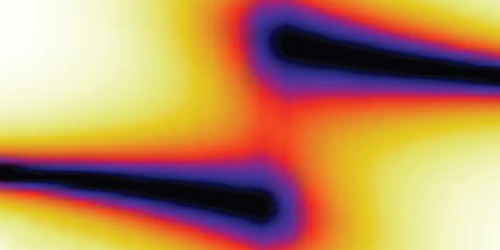Quasiparticles Repel, Then Attract
When a mobile impurity such as an electron interacts with a bath of bosons, it forms a quasiparticle—a polaron—whose properties are very different from those of the impurity itself. For example, in a superconductor, electron–phonon interactions generate polarons that attract one another (forming Cooper pairs) even though individual electrons are mutually repulsive. A general understanding of what dictates polarons’ properties and their resulting interactions remains elusive but is fundamental for finding ways to tune and manipulate these quasiparticles. Addressing this problem with experiments and theory, Li Bing Tan of the Swiss Federal Institute of Technology (ETH) in Zurich and her colleagues demonstrate a mechanism for modifying impurity interactions in a bosonic bath [1]. By changing the bath density, they turn repulsive interactions into attractive ones.
Tan and her colleagues excited polaritons—quasiparticles comprising a photon coupled to an exciton—in an atomically thin semiconductor embedded in a resonant optical cavity. By using differently polarized lasers, two of these polaritons—the impurities—were created with one spin direction, while the rest—a controllable number making up the bosonic bath—had the opposite spin direction. Spectroscopy measurements of the light that exited the cavity revealed how the impurity polaritons interacted with the bath and with each other. For low bath-polariton densities, the impurities repelled one another. As the bath density increased, the repulsion decreased in strength and then, strikingly, switched to attraction.
The researchers say that their finding is the first direct measurement of impurity interaction strength in any physical system. It provides a means of controlling and identifying unconventional mechanisms of quasiparticle interaction that could be used to engineer superconductivity in different materials.
–Rachel Berkowitz
Rachel Berkowitz is a Corresponding Editor for Physics Magazine based in Vancouver, Canada.
References
- L. B. Tan et al., “Bose polaron interactions in a cavity-coupled monolayer semiconductor,” Phys. Rev. X 13, 031036 (2023).




